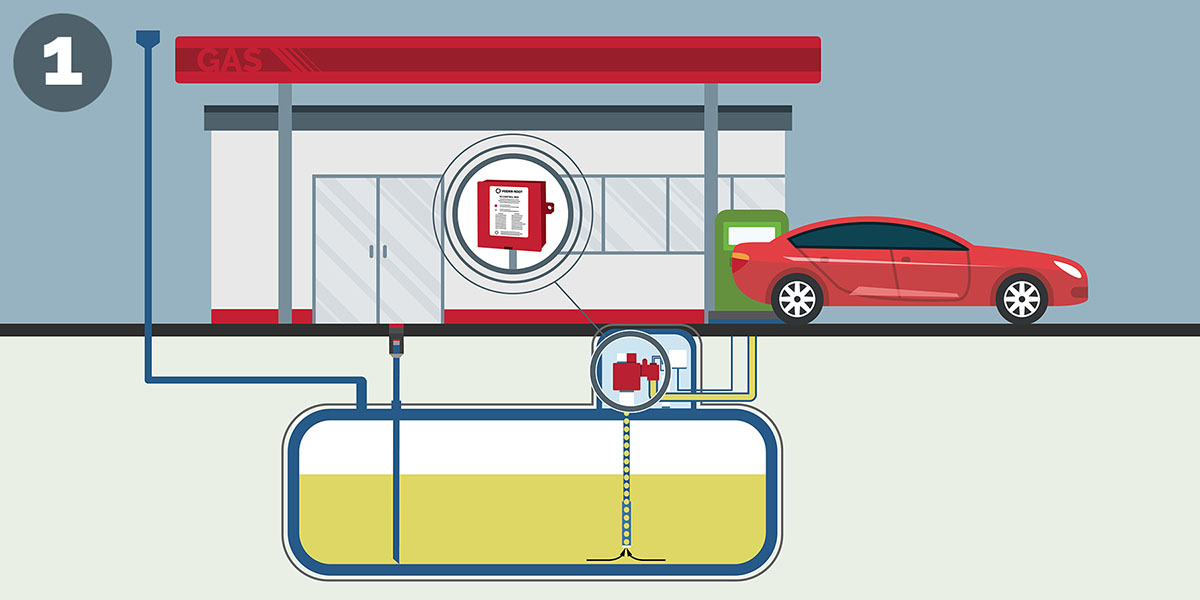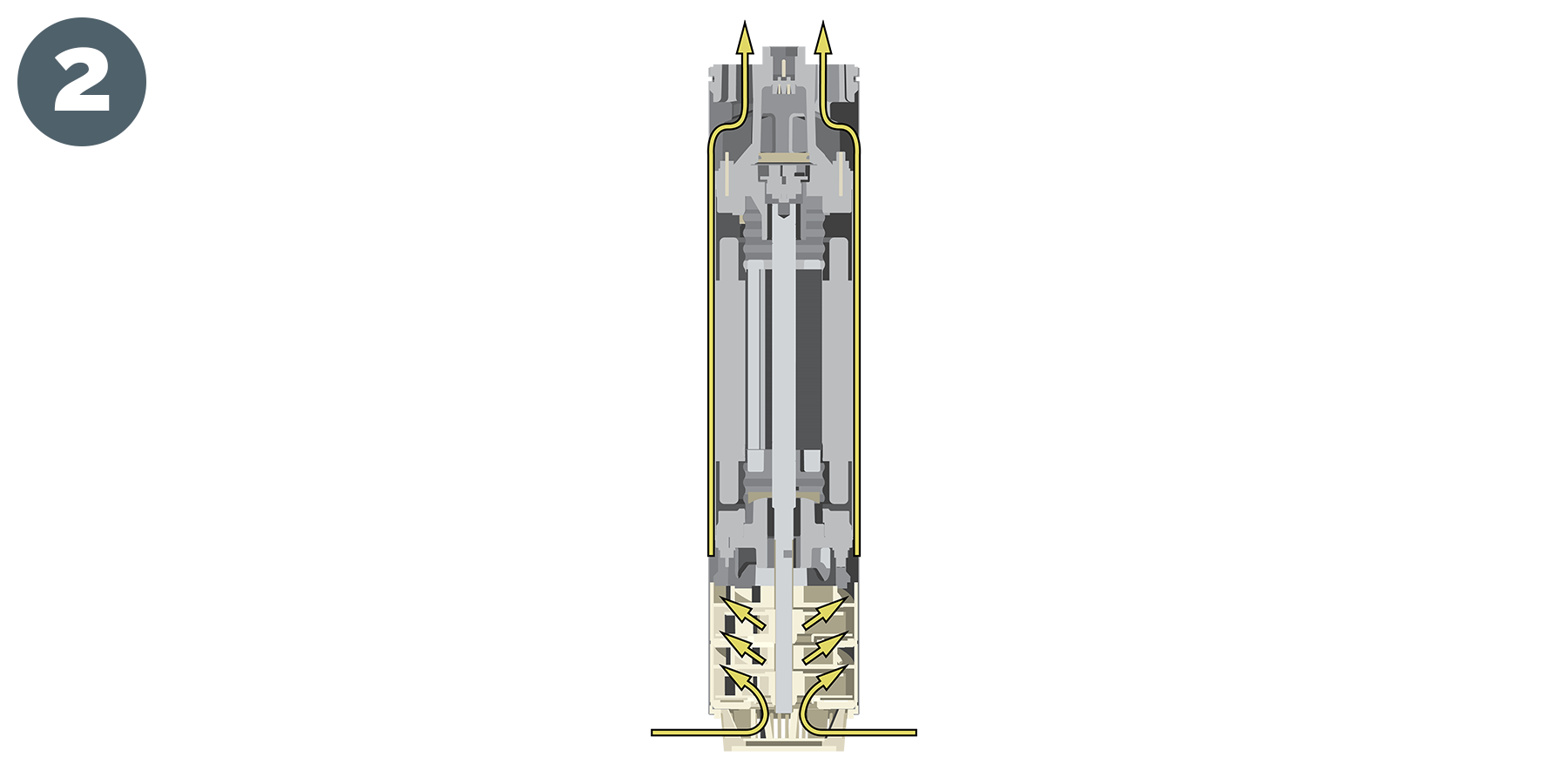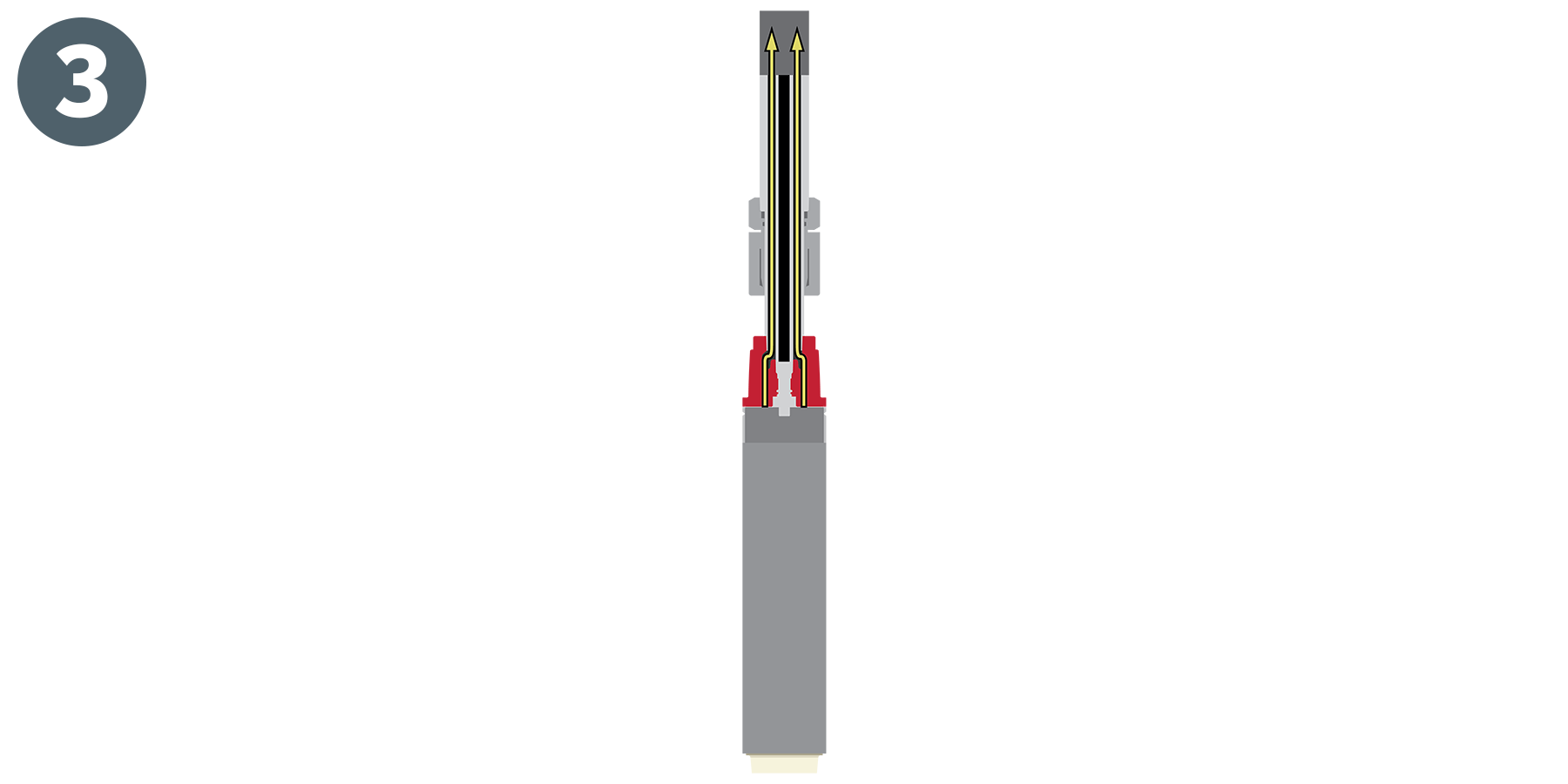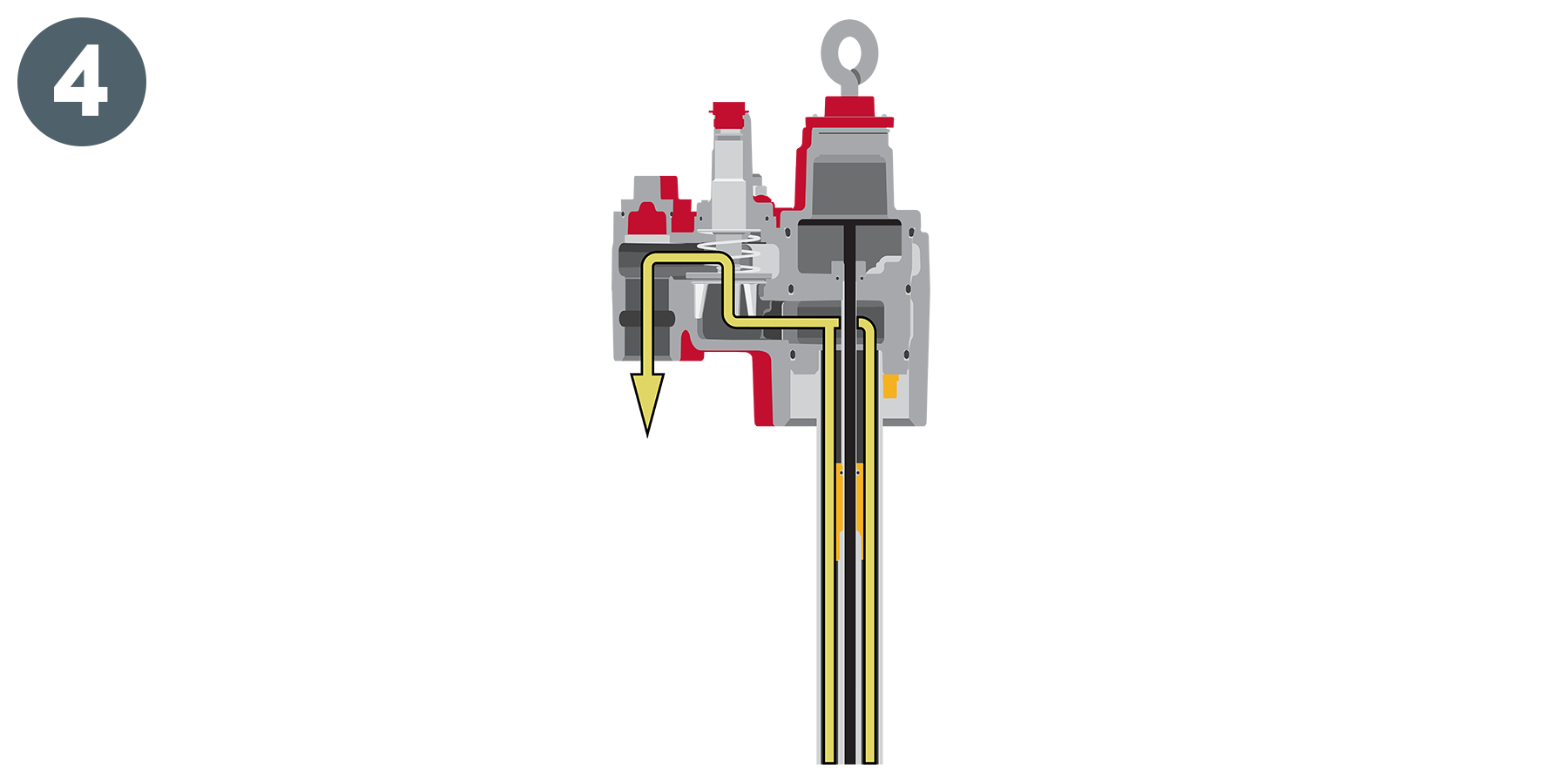Starting the Flow
- During a transaction, the packer manifold receives the signal and activates the UMP.
- The UMP starts spinning and that rotational energy creates pressure and moves fuel up through the pump.
- The fuel flows up through the column pipe to the packer manifold.
- Fuel enters the packer manifold and goes through a check valve, which is used to keep pressure in the lines, before being discharged into to the fuel lines.
Keeping Track
While it’s dispensing fuel to your vehicle, the dispenser is keeping track of exactly what you’ve pumped and how much that costs. Once you’re done, there are a series of signals that are managed through the automatic tank gauge and control boxes that turn off the STP and finish the transaction.
If using a TLS-450PLUS Automatic Tank Gauge paired with Electronic PLLD, then station operators can also monitor line pressure during the dispense to ensure that system isn't leaking and meets release detection requirements.
What’s Next?
Next week, we’re discussing how the TLS-450PLUS ATG makes sure the fueling system is free from leaks and compliant with regulatory requirements.
You can find more information on every step of the process here.




